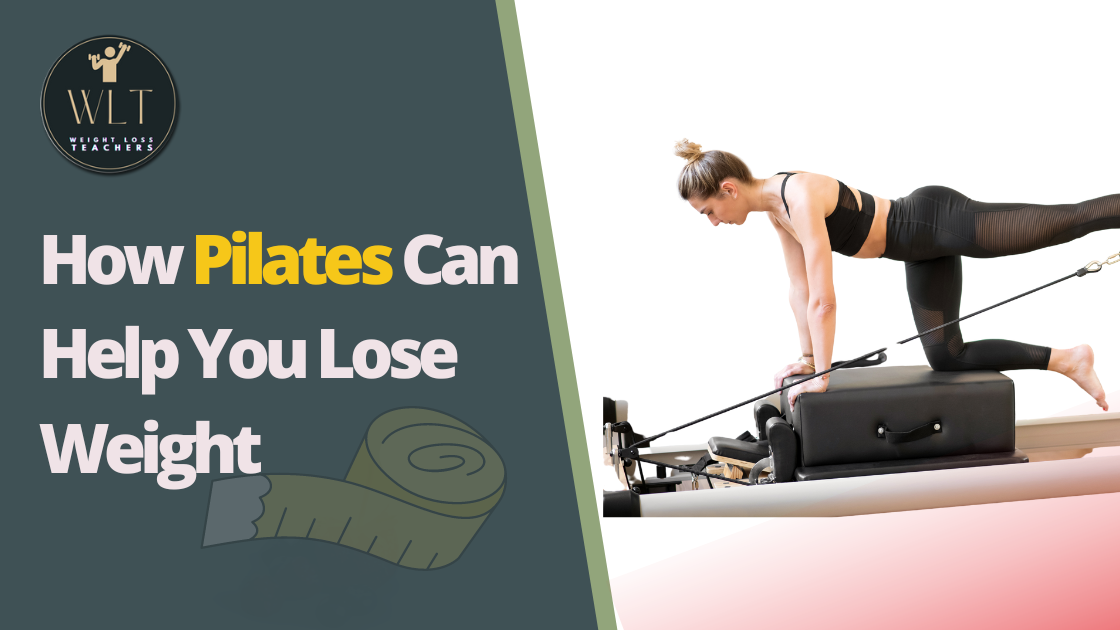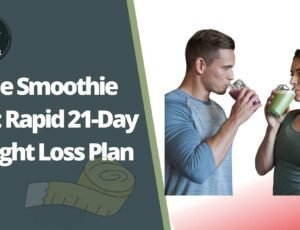
How Pilates Can Help You Lose Weight
Pilates, originally known as “Contrology,” was developed by Joseph Pilates in the early 20th century as a system to enhance physical fitness through controlled and precise movements. Over the years, Pilates has evolved into a comprehensive exercise method that encompasses a wide range of movements, equipment, and philosophies.
Curious about how Pilates can help you lose weight? Pilates is not just about flexibility and core strength; it also offers a highly effective way to shed pounds. This low-impact exercise strengthens and tones muscles, boosts metabolism, and improves overall fitness. By incorporating Pilates into your regular workout routine, you can enhance your weight loss efforts and enjoy a well-rounded fitness regimen. Learn how Pilates can help you achieve your weight loss goals while promoting a balanced and healthy lifestyle.
Table of Contents
Understanding Weight Loss

Weight loss is a multifaceted process that involves both physiological and psychological factors. Achieving and maintaining a healthy weight requires a delicate balance between energy intake and expenditure. Regular physical activity is a cornerstone of effective weight management, as it aids in boosting metabolism, preserving muscle mass, and enhancing overall fitness levels.
The Core Principles of Pilates
Central to the practice of Pilates are six core principles: Breath, Concentration, Control, Centering, Precision, and Flow. These principles guide practitioners through movements that emphasize awareness of breath, mindfulness, and controlled muscle engagement. The integration of these principles forms the foundation for the weight loss benefits of Pilates.
The Mechanisms behind Pilates-Induced Weight Loss: Enhancing Metabolism, Muscle Growth, and Insulin Sensitivity

Pilates, a fitness method revered for its holistic approach to well-being, has transcended its reputation as a posture-improving exercise regimen. The intricate mechanisms underlying Pilates-induced weight loss have garnered attention and appreciation from fitness enthusiasts seeking effective and sustainable weight management solutions. The fusion of controlled movements, breath, and mindfulness within Pilates brings forth a symphony of physiological changes that facilitate weight loss in a unique and profound manner.
Enhancing Metabolism through Muscle Activation
One of the cornerstones of Pilates is its emphasis on muscle activation and engagement. The controlled and deliberate movements performed during Pilates exercises target a myriad of muscle groups, leading to increased metabolic activity. The intricate nature of Pilates routines ensures that even the smallest muscle fibers are recruited, resulting in a higher energy expenditure during and after each session.
Muscle activation is a key driver of metabolic rate elevation. As muscles contract and release during Pilates movements, they require energy in the form of calories. This heightened energy demand induces an increase in the basal metabolic rate (BMR), the number of calories the body burns at rest to maintain basic bodily functions. Over time, this enhanced BMR contributes to greater calorie expenditure, supporting the weight loss process.
Muscle Growth and Increased Resting Metabolic Rate
Pilates has been shown to promote muscle growth, a factor crucial for sustained weight loss and overall health. Muscle tissue is metabolically active, meaning it burns more calories at rest compared to fat tissue. The more lean muscle mass one possesses, the more energy the body requires to maintain that muscle, even when at rest.
Here’s a summary of muscle growth and increased resting metabolic rate in tabular form:
| Aspect | Description |
|---|---|
| Muscle Growth (Hypertrophy) | Muscle growth occurs through resistance training, which causes micro-tears in muscle fibers that repair and grow stronger. |
| Protein Synthesis | Increased protein synthesis is essential for muscle repair and growth, supported by a nutrient-rich diet, especially high in protein. |
| Hormonal Influence | Hormones like testosterone, growth hormone, and insulin-like growth factors play a crucial role in muscle repair and growth. |
| Resting Metabolic Rate (RMR) | RMR is the energy expended at rest for essential physiological functions. Muscle tissue requires more energy, thus increasing RMR. |
| Energy Expenditure | Muscle tissue burns more calories at rest compared to fat tissue, contributing to a higher metabolic rate. |
| Afterburn Effect (EPOC) | Exercise, especially resistance training, can keep metabolism elevated for up to 48 hours post-workout, burning additional calories. |
| Longevity and Health | Increased muscle mass is associated with better overall health and longevity, reducing the risk of chronic diseases. |
| Functional Strength | More muscle mass improves physical performance, enabling individuals to lift heavier weights and perform daily activities more efficiently. |
Building muscle not only enhances physical strength and appearance but also boosts your resting metabolic rate, helping you burn more calories even at rest.
Pilates exercises, particularly those targeting the core muscles, major muscle groups, and stabilizing muscles, promote muscle hypertrophy – the growth and strengthening of muscle fibers. As muscles adapt to the controlled resistance provided by Pilates movements, they become denser and more metabolically active. This effect translates into an elevated resting metabolic rate, allowing individuals to burn more calories throughout the day, even when not engaged in physical activity.
Improving Insulin Sensitivity and Blood Glucose Regulation
Insulin sensitivity, a critical factor in weight management, is a measure of how efficiently cells respond to insulin, the hormone responsible for regulating blood glucose levels. Poor insulin sensitivity is associated with weight gain, especially in the form of visceral fat – the fat that accumulates around internal organs and contributes to metabolic dysfunction.
Pilates, with its focus on controlled and deliberate movements, enhances insulin sensitivity. Regular Pilates practice has been shown to improve glucose uptake by muscle cells, facilitating better blood sugar regulation. By promoting efficient glucose utilization, Pilates helps prevent excessive blood sugar spikes and crashes, reducing the likelihood of overeating and subsequent weight gain.
Furthermore, Pilates aids in reducing stress, another significant factor influencing insulin sensitivity and weight management. Chronic stress can lead to elevated cortisol levels, which impair insulin sensitivity and encourage fat storage, particularly in the abdominal region. The mind-body connection emphasized in Pilates, through breathing and relaxation techniques, helps manage stress and cortisol levels, promoting better insulin sensitivity and contributing to a healthier weight loss journey.
Cardiovascular Benefits of Pilates: Enhancing Heart Health and Balancing Aerobic vs. Anaerobic Exercise

Pilates, renowned for its focus on core strength, flexibility, and mindful movement, has often been associated with building a strong foundation of physical well-being. Beyond its traditional scope, Pilates offers a range of cardiovascular benefits that contribute to overall heart health and fitness. In this exploration, we delve into the symbiotic relationship between Pilates and heart health, shedding light on the significance of achieving a balance between aerobic and anaerobic exercise within the framework of a Pilates practice.
Pilates and Heart Health
While Pilates is not conventionally categorized as an intense cardiovascular workout like running or swimming, its impact on heart health is undeniable. The controlled, rhythmic, and deliberate movements performed during Pilates sessions elicit important cardiovascular responses. These responses, though distinct from those experienced during high-intensity cardio exercises, contribute to improved cardiovascular endurance and function.
Here’s a summary of the benefits of Pilates for heart health in tabular form:
| Benefit | Description |
|---|---|
| Reduces Stress and Anxiety | Promotes relaxation and mindfulness, lowering heart rate and reducing strain on the cardiovascular system. |
| Improves Posture and Balance | Strengthens core muscles to support proper posture and balance, reducing heart strain. |
| Enhances Respiratory Function | Focuses on controlled breathing, which improves lung capacity and oxygenation. |
| Increases Physical Activity | Regular practice contributes to overall physical fitness, benefiting heart health. |
| Lowers Blood Pressure | Can help reduce systolic and diastolic blood pressure, especially in individuals with hypertension. |
| Improves Metabolic Function | Enhances metabolic function, contributing to better cardiovascular health. |
| Supports Healthy Weight Management | Helps maintain a healthy weight, crucial for heart health. |
Pilates is a great way to support heart health through a combination of physical activity, stress reduction, and improved respiratory and metabolic functions
Pilates movements encourage blood circulation throughout the body, promoting the efficient delivery of oxygen and nutrients to cells and tissues. The controlled breathing techniques central to Pilates facilitate deep diaphragmatic breathing, enhancing lung capacity and oxygen exchange. This coordinated effort of controlled movements and focused breathing engages the cardiovascular system, strengthening the heart and promoting its overall health.
Furthermore, Pilates encourages the development of balanced muscular strength and posture, leading to better alignment of the spine and reduced strain on the heart. The improved posture achieved through Pilates practice optimizes blood flow, preventing unnecessary stress on the heart and supporting its proper functioning.
Aerobic vs. Anaerobic Exercise: Finding Balance
A crucial aspect of cardiovascular fitness is finding the right balance between aerobic and anaerobic exercise. Aerobic exercise involves activities that elevate the heart rate over an extended period, such as jogging, swimming, or cycling. Anaerobic exercise, on the other hand, consists of short bursts of high-intensity activities, like weightlifting or sprinting.
Pilates presents a unique combination of both aerobic and anaerobic elements within its practice. While it may not always achieve the same heart rate elevation as a full-fledged aerobic workout, the flowing sequences and repetition of movements in Pilates contribute to a moderate increase in heart rate, engaging the cardiovascular system and promoting endurance.
Incorporating Pilates into a fitness routine can also complement traditional aerobic exercises. The controlled and precise movements in Pilates can help correct muscle imbalances and improve overall body alignment, reducing the risk of injury during high-impact aerobic activities.
Moreover, Pilates provides an opportunity for interval training, a form of anaerobic exercise. Intermittent high-intensity movements, coupled with brief periods of active recovery, create an interval-style workout that challenges the cardiovascular system in a controlled manner. This interval training approach, rooted in Pilates principles, helps improve cardiovascular conditioning and supports heart health.
Mind-Body Connection: A Catalyst for Weight Loss – Managing Stress and Cultivating Mindful Eating Habits

In the quest for effective and sustainable weight loss, the power of the mind-body connection has emerged as a pivotal factor. Beyond mere physical exertion and dietary changes, understanding and harnessing the intricate interplay between mental and physical well-being can significantly influence one’s ability to shed excess pounds. This exploration delves into two essential components of the mind-body connection: stress reduction and mindful eating practices, highlighting their role as catalysts for successful weight loss journeys.
Stress Reduction and Cortisol Management
In our fast-paced modern lives, chronic stress has become a ubiquitous presence. Its impact on weight management, particularly through the hormone cortisol, has gained considerable attention. Cortisol, often referred to as the “stress hormone,” is released by the adrenal glands in response to stress and triggers the body’s fight-or-flight response. While cortisol is crucial for survival in acute stress situations, prolonged and excessive release can have detrimental effects on weight and overall health.
Elevated cortisol levels are associated with increased abdominal fat storage, as cortisol encourages the storage of energy (in the form of fat) for potential future use. This visceral fat accumulation, in turn, raises the risk of obesity, metabolic syndrome, and other health complications. Here is where the mind-body connection enters the stage.
Pilates, with its focus on controlled breathing, relaxation techniques, and mindfulness, offers a powerful tool for managing stress and cortisol levels. The deliberate and mindful movements of Pilates encourage the activation of the parasympathetic nervous system, responsible for the body’s “rest and digest” state. This counteracts the activation of the sympathetic nervous system, which triggers the release of cortisol. By engaging in regular Pilates practice, individuals can mitigate the effects of chronic stress, promote relaxation, and contribute to healthier cortisol levels.
Mindful Eating and Portion Control
While the connection between stress and weight gain is well-established, the act of eating itself also plays a pivotal role in the mind-body relationship. Mindful eating, a practice rooted in mindfulness principles, involves being fully present and aware during meals. Rather than consuming food mindlessly, individuals engage in a sensory experience, paying attention to taste, texture, and satiety cues.
Pilates cultivates mindfulness not only in movement but also in eating. The self-awareness developed through Pilates practice extends to the dining table, encouraging individuals to make conscious and healthful food choices. By embracing mindful eating, practitioners can establish a deeper connection with their body’s hunger and fullness signals, making it easier to recognize true hunger and prevent overeating.
Incorporating the principles of mindful eating into daily life goes hand in hand with portion control – a cornerstone of successful weight loss. Mindful eating helps individuals develop a better understanding of appropriate portion sizes and avoid the pitfalls of emotional eating or consuming food in response to stress. This awareness, fostered by the mind-body connection cultivated through Pilates, empowers individuals to make informed decisions about their dietary choices, ultimately contributing to a more balanced and effective weight loss journey.
Pilates for Different Phases of the Weight Loss Journey: A Comprehensive Guide

Embarking on a weight loss journey is a multifaceted endeavor that requires dedication, perseverance, and a well-structured approach. Pilates, with its versatile and adaptable nature, offers a valuable toolset that caters to individuals at various stages of their weight loss journey. Whether you’re just starting out, making progress towards your goals, or striving to maintain your achievements, Pilates has something to offer. In this guide, we explore how Pilates can be tailored to support individuals at different phases of their weight loss journey: beginners, intermediate practitioners, and advanced participants.
Beginners: Building a Strong Foundation
For those stepping into the realm of Pilates as beginners, the focus lies on building a strong foundation that will serve as the cornerstone for further progress. Pilates introduces fundamental concepts such as breathing, core engagement, and proper body alignment, all of which are integral not only to effective Pilates practice but also to a successful weight loss journey.
At this stage, emphasis is placed on learning the basic Pilates movements and understanding the principles that underpin the practice. Guided by an experienced instructor, beginners gradually develop body awareness, muscle control, and coordination. These foundational skills create a solid platform for future advancement and success.
As beginners become acquainted with Pilates, they also begin to experience the subtle yet transformative benefits of the practice. Increased core strength, improved posture, and enhanced mind-body connection pave the way for efficient movement and lay the groundwork for more intensive workouts in the intermediate and advanced stages.
Intermediate: Progressing Towards Intensity
Having established a strong foundation, intermediate practitioners are ready to take their Pilates practice to the next level. This phase of the weight loss journey involves the incorporation of more challenging exercises and sequences that target specific muscle groups and increase overall intensity.
Intermediate Pilates workouts often involve the introduction of props and equipment, such as resistance bands, Pilates balls, and the reformer machine. These additions offer increased resistance and diversity to exercises, further engaging muscles and stimulating progress. As individuals progress through intermediate Pilates routines, they experience heightened muscle activation, improved flexibility, and a greater sense of body control.
During this phase, the integration of cardiovascular components becomes more pronounced. Interval training, where bursts of high-intensity movements are interspersed with periods of active recovery, can be seamlessly incorporated into Pilates routines. This combination of controlled movements and interval training fosters cardiovascular endurance and contributes to more effective calorie burning.
Advanced: Sculpting and Maintaining the New You
The advanced phase of the weight loss journey marks a stage of refinement and sculpting. Pilates at this level offers an array of intricate and demanding exercises that challenge even the most seasoned practitioners. These exercises target specific muscle groups with precision, allowing for the sculpting and toning of the body.
Advanced Pilates workouts often involve complex sequences and seamless transitions between movements. The incorporation of advanced Pilates equipment, such as the Cadillac and Wunda Chair, further amplifies the challenge and diversity of exercises. As practitioners engage in these advanced routines, they experience heightened muscular strength, endurance, and control.
At this stage, Pilates becomes an integral component of weight maintenance. The emphasis shifts from solely shedding pounds to sculpting and preserving the achieved results. The dynamic and multifaceted nature of advanced Pilates promotes lean muscle mass, which in turn contributes to an elevated resting metabolic rate and continued calorie expenditure.
Unlocking the Full Potential of Pilates: Navigating Challenges, Embracing Diversity, and Fusing Expert Insights

Pilates, a holistic exercise method celebrated for its transformative benefits, offers a journey of discovery and growth. While its contributions to weight loss and overall well-being are undeniable, it is important to recognize and address the challenges and limitations that can arise. This comprehensive exploration dives into common misconceptions, the adaptability of Pilates across diverse fitness levels, expert opinions on Pilates and weight loss, variations for optimal weight loss, and the integration of Pilates into a holistic lifestyle.
Addressing Common Misconceptions
Despite its proven efficacy, Pilates is not immune to misconceptions that can hinder its potential. One common misconception is that Pilates is only suitable for certain age groups or fitness levels. In reality, Pilates is adaptable and can be tailored to individuals of all ages and abilities. Another misconception is that Pilates is solely a “gentle” form of exercise. While Pilates emphasizes control and precision, it can also be challenging and intense, especially in advanced variations. Dispelling these misconceptions fosters a more inclusive and accurate understanding of Pilates’ capabilities.
Adapting Pilates for Diverse Fitness Levels
Pilates’ versatility lies in its ability to accommodate a wide spectrum of fitness levels. Whether you’re a beginner or an experienced athlete, Pilates can be customized to suit your needs. Certified instructors play a crucial role in tailoring exercises, modifying movements, and offering progressions that align with an individual’s capabilities and goals. This adaptability ensures that everyone can benefit from Pilates, irrespective of their starting point.
Expert Opinions: Pilates and Weight Loss
The endorsement of fitness professionals and experts reinforces Pilates’ role in weight loss journeys. Expert opinions shed light on the scientific underpinnings of Pilates’ impact on metabolism, muscle engagement, and overall well-being. These insights highlight the integration of Pilates as a strategic component within a comprehensive weight loss regimen.
Pilates Variations for Optimal Weight Loss
Pilates offers a spectrum of variations, each with its own unique benefits for weight loss. Mat Pilates, a fundamental approach using body weight, enhances core strength and stability. Reformer Pilates introduces resistance through specialized equipment, intensifying muscle engagement and calorie burn. Contemporary Pilates fusion combines traditional Pilates principles with elements from other fitness disciplines, creating a dynamic and multifaceted workout experience.
“When diet is wrong, medicine is of no use. When diet is correct, medicine is of no need.” – Ayurvedic Proverb
Mat Pilates
Mat Pilates serves as a gateway to the world of Pilates, providing a foundation for body awareness and muscle activation. While it may appear less intense than other variations, it challenges core strength and flexibility through controlled movements. Mat Pilates serves as an excellent starting point, especially for beginners, offering a gradual introduction to the mind-body connection and controlled muscle engagement.
Reformer Pilates
Reformer Pilates adds an extra dimension to the practice through the use of specialized equipment. The reformer, with its adjustable resistance, facilitates targeted muscle activation and dynamic movement patterns. Reformer Pilates accelerates calorie burn while promoting muscle growth and toning. Its versatility caters to individuals seeking more intense and challenging workouts, making it an effective choice for those progressing beyond the beginner stage.
Contemporary Approaches: Pilates Fusion
Contemporary Pilates fusion breaks conventional boundaries by integrating Pilates principles with elements from other fitness disciplines. This fusion creates a hybrid workout experience that not only enhances weight loss potential but also keeps practitioners engaged and motivated. The fusion of Pilates with elements like cardio, strength training, or dance amplifies the calorie-burning effect while infusing creativity into the routine.
Incorporating Pilates into a Holistic Lifestyle

To fully harness the benefits of Pilates for weight loss and well-being, integration into a holistic lifestyle is key. Establishing a consistent Pilates routine lays the groundwork for progress and results. A balanced approach involves combining Pilates with other forms of exercise, such as cardio or resistance training. This synergy creates a comprehensive fitness regimen that targets multiple aspects of fitness, from muscle strength to cardiovascular health.
Establishing a Consistent Routine
Consistency is the cornerstone of success in any fitness journey. Designating specific times for Pilates sessions helps cultivate a routine that becomes ingrained in daily life. By making Pilates a regular part of your schedule, you maximize its impact on weight loss and overall health.
Balancing Pilates with Other Forms of Exercise
While Pilates offers unique benefits, a well-rounded fitness regimen encompasses various exercise modalities. Cardiovascular workouts, such as running or cycling, enhance calorie burn, while resistance training contributes to muscle growth and metabolic rate elevation. Integrating Pilates with other forms of exercise ensures a comprehensive approach that addresses diverse fitness goals.
Note: There might be affiliate links mentioned here. We may receive a commission if you purchase a product through an affiliate link. There is no additional charge for you. Please do your own research before making any online purchases.
Conclusion
In the expansive realm of health and wellness, the practice of fasting stands as a dynamic and multifaceted tool. Its potential benefits are vast, encompassing weight management, metabolic optimization, and cellular rejuvenation. Yet, the path to harnessing these benefits is best traversed with a comprehensive understanding of the potential risks that accompany fasting.
Embarking on a fasting journey requires more than a superficial understanding; it necessitates an informed approach that aligns with individual health profiles, goals, and lifestyles. Consulting healthcare professionals, crafting a well-balanced nutritional strategy, and practicing mindfulness are foundational elements that underpin a safe and effective fasting experience.
In the intricate dance of fasting’s potential rewards and inherent risks, a holistic perspective emerges. This perspective recognizes the symbiotic relationship between the body and mind, understanding that optimal health is not merely the absence of illness but the harmonious integration of physiological vitality and psychological well-being. Armed with knowledge and a commitment to well-rounded self-care, individuals can navigate the fasting landscape with confidence, embracing the promise of health enhancement while safeguarding their holistic equilibrium.
FAQs (Frequently Asked Questions)
Q1. What is fasting?
A1. Fasting is the deliberate abstention from food and, in some cases, drink for a defined period. It has been practiced for various reasons, including religious observances, health optimization, and personal preferences.
Q2. What are the different types of fasting?
A2. There are several fasting methods, including intermittent fasting, alternate-day fasting, and extended fasting. These methods involve different patterns of eating and fasting cycles.
Q3. What are the potential benefits of fasting?
A3. Fasting has been associated with weight loss, enhanced insulin sensitivity, autophagy (cellular renewal), cognitive improvement, and reduced inflammation, among other benefits.
Q4. How does fasting lead to weight loss?
A4. Fasting creates a caloric deficit, prompting the body to use stored fat for energy. The metabolic shift into ketosis further aids in fat breakdown and weight reduction.
Q5. Can fasting improve insulin sensitivity?
A5. Yes, fasting can enhance insulin sensitivity by reducing insulin levels and allowing cells to respond more effectively to the hormone. This can contribute to better blood sugar regulation and a reduced risk of type 2 diabetes.
Q6. What is autophagy, and how does fasting trigger it?
A6. Autophagy is the cellular process of recycling and removing damaged components. Fasting stimulates autophagy as the body reallocates resources, promoting cellular health and reducing inflammation.
Q7. How does fasting affect cognitive function?
A7. Fasting stimulates the production of brain-derived neurotrophic factor (BDNF), which is associated with improved cognitive function, learning, and memory. This can lead to enhanced mental clarity and focus.
Q8. Can fasting reduce inflammation?
A8. Yes, fasting has been shown to decrease markers of inflammation in the body. This can contribute to a reduced risk of chronic diseases like heart disease and cancer.
Q9. Are there risks associated with fasting?
A9. Yes, fasting can carry risks such as nutrient deficiencies, dehydration, low blood sugar, muscle loss, and an increased stress response. It’s important to approach fasting with careful planning and monitoring.
Q10. How can I practice fasting safely?
A10. To practice fasting safely, consult with a healthcare professional, especially if you have underlying health conditions. Hydrate adequately, maintain balanced nutrition during and after fasting, monitor blood sugar levels if necessary, and incorporate relaxation techniques to manage stress.
Disclaimer: The information provided in this article is for educational purposes only and should not be considered as a substitute for medical advice. Consult a healthcare professional before implementing any home remedies or making significant changes to your lifestyle.







